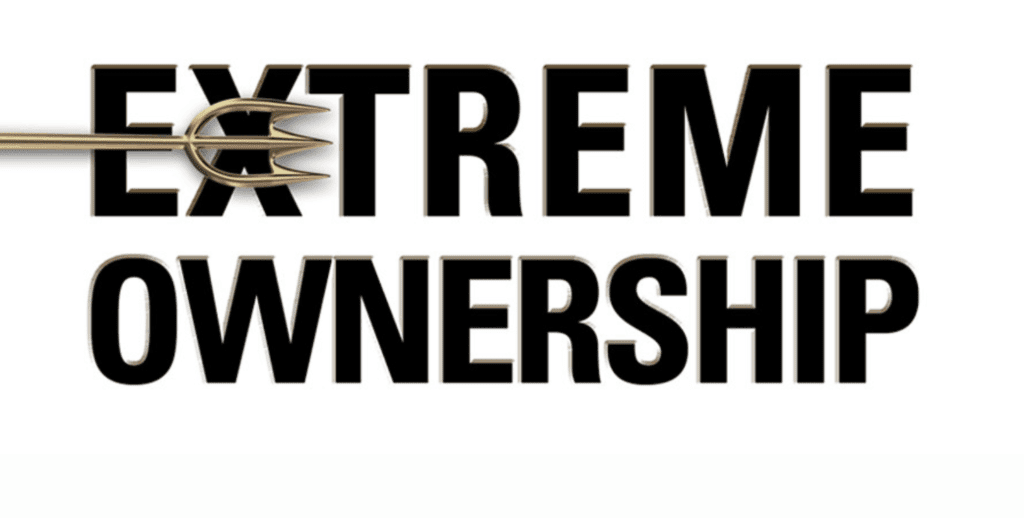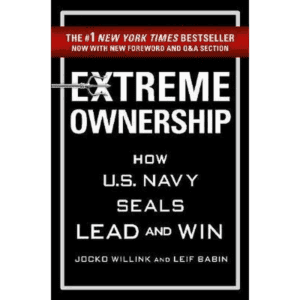Raising capital the Navy Seal’s way inspired by Jocko Willink and Leif Babin. Let’s meet these guys.
JOCKO WILLINK
is a retired U.S. Navy SEAL officer, co-author of the #1 New York Times bestseller Extreme Ownership: How U.S. Navy SEALs Lead and Win, host of the top-rated Jocko Podcast, and co-founder of Echelon Front.
LEIF BABIN
is a former U.S. Navy SEAL officer, co-author of #1 New York Times bestseller Extreme Ownership: How U.S. Navy SEALs Lead and Win, and co-founder of Echelon Front, serving as President/COO.
The ideas in this blog were suggested by this book (Extreme Ownership by Willink and Babin) and actually go substantially beyond it, into the unknown. Read it if you dare.

Raising capital for your business can seem like a stressful challenge. Like a military campaign, timing is everything. You have only a certain amount of time so you have to raise capital while the timing for your business is still good. Chances are, you’re reading because raising capital is taking too long, far too long, or you don’t know how to get started. One reason is that you may not know precisely why investors are saying no. So you don’t know what to fix.
You’re in the dark, realizing you need to alter something, but unsure of what changes to make. It’s a bit like solving a maze puzzle, except in this case you’re actually inside the maze! When you’re inside the maze you simply don’t have that bird’s-eye view. You run smack into dead-end after dead-end, getting more frustrated as time goes on. You could be one right move from finding your way out of the maze, or you could be way off course. You just don’t know. This is no way to fight any battle, especially raising capital.

What you need is perspective. You need to know what’s got you stuck so that you can take effective action. The way to gain perspective quickly about raising capital for your business is through feedback from others. That’s why I stress the importance of practicing your pitch often, to people who will provide you with effective feedback. Some Vision Masters avoid this because they simply don’t relish the critical feedback.
By the way, they rarely get out of the funding maze, either. Since you do want to get out of the maze, you won’t shrink from doing what it takes to get perspective from the feedback of others who have more experience than you. Don’t shrink. Grow with feedback.
Here are the ways to go about this:
- Each time you pitch your company to an investor, ask them what they thought of you and the pitch, particularly anything negative. Do this whether you got a second meeting or not. Some investors will be happy to tell you where they think you fell short. It could be something about you. It could be something about the business. It could be some other factor. Some investor will resist giving feedback because they don’t like souring relationships.You must insist on honest feedback as the price for disclosure of your ideas. To make it easier to give feedback, you might frame your question in a manageable way, for example, “Now that you’ve heard my pitch, how would you rate me on a scale of 1 to 10, where 1 is an unrealistic dreamer and 10 is highly realistic and grounded?” Ask a similar question for each of the pairs of characteristics I’m about to tell you about. The key is don’t pass up this opportunity to gain some perspective. Then really listen when they give you their thoughts.
- Find a mentor, coach or advisor. Pitch repeatedly to them. Be sure to tell them that you want critical feedback, that it’s ok for them to be tough on you. This is a safe space for gaining fresh perspective about what’s missing from you, your company, or your pitch. Then revise your pitch. Try again. Your goal is to determine whether in your mentor’s view the problem relates to you personally — how you present yourself, your company — the opportunity itself, or how you pitch. Continue to practice. Continue to hone your presentation.
- Once you’ve gained all the feedback you can, then honed your presentation, go out to investors again. Pitch them. Get their feedback if the answer is still ‘no.’
Each time you pitch, to an investor or a trusted advisor, you gain perspective about raising capital. You begin to hone in on exactly what is leading to all those ‘no thank you’s.’

Sometimes, there is a basic flaw in your presentation or the opportunity you’re pitching. But sometimes the problem is you – or that is, the way you’re showing up. Vision Masters often face a difficult challenge when dealing with investors due to one overarching issue: you naturally occur to them as a dreamer, full of great ideas, but likely to be challenged by running a successful business.
How do I know this? Because 80% to 90% of their deals have failed in the past even after the investor has done a great deal of vetting and due diligence. This is a difficult thing to face head-on. Part of what makes you great is your visionary perspective. Without it, you wouldn’t have noticed a problem in the world, then developed a unique solution to it. That makes you special, but it doesn’t necessarily make you a great leader. It doesn’t necessarily evoke trust in the eyes of the financial community. On the contrary, the kind of people that can manage a business are usually NOT visionary. This is just an example of one common form of feedback you may hear.
Whatever feedback you’re getting from investors, it’s critically important that you respond the right way. This is the key that can open the door to the funding you want. I call this key “The Law of Ownership.” Here it is:
“The Law of Ownership”
Ownership is surrendering to a purpose at the level of 100% personal investment. At this level, you permit the requirements of the purpose to alter your personal abilities when encountering frustration, failure or negative feedback. By surrendering to a purpose in this way, you will have the highest possible likelihood of achieving your desired results and sustaining them.” – Robert Steven Kramarz *
Ownership, as described here, is more than a simple commitment or dedication to a purpose or goal. Commitment or dedication is usually described as “doing whatever it takes” to get to the desired purpose or goal. Ownership, in contrast, implies “evolving MYSELF in whatever way it takes” to get to the desired purpose or goal. This is a very powerful distinction. With commitment, you may reach your goal, but it may take too much time or cost too much or have negative consequences. With ownership, not only do you get to your goal more quickly, but the costs and negative consequences are less. Best of all, the evolution of your abilities is permanent, so reaching future goals is also easier and faster.
 Let’s get back to feedback and apply the “Law of Ownership” to getting feedback about raising capital. Responding to feedback using the Law of Ownership is key. Without the Law of Ownership, you won’t be able to apply the feedback. With the Law of Ownership, using feedback because simple. I didn’t say easy. In fact, the difficulty of following the Law of Ownership is what makes it work.
Let’s get back to feedback and apply the “Law of Ownership” to getting feedback about raising capital. Responding to feedback using the Law of Ownership is key. Without the Law of Ownership, you won’t be able to apply the feedback. With the Law of Ownership, using feedback because simple. I didn’t say easy. In fact, the difficulty of following the Law of Ownership is what makes it work.
Fortunately, this doesn’t involve therapy. There’s nothing about you fundamentally that requires changing, and even if there is, there’s not much we can do it about it in the time you have to get funding. It doesn’t require a transformation of personality, though your personality may well transform as a result. It does involve evolving your high-level abilities.
Let me explain what I mean by high-level abilities here. I don’t mean abilities like typing, doing the math, writing, and so on. You’ve got what you’ve got in these skill areas. What I mean are your ways of dealing with complexity such as complex problems, goals, and situations. I’m calling these high-level abilities because there’s just no better word that captures the idea. If you have a better word, I’d like to know it.
Finally, there are two pathways you can take to compensate for deficits in your high-level abilities. Both work. One takes less time. Both have the same purpose — altering your team’s abilities in the key areas identified by others as your weak points.
Before exploring the two pathways under the Law of Ownership, let me give you an empowering context. The personal criticism type of feedback you may be getting always comes in pairs of opposites. Those who critique you are generally saying that your ways of dealing with complex problems are stuck close to one or more of these pairs of opposites, rather than freely floating — giving you the freedom to behave in whatever way is most powerful. The kinds of abilities most relevant to running a fast-growing business (and raising capital for it) are:
- “open to taking risks” yet “trustworthy”
- “visionary” yet “realistic”
- “persistent” yet “agile”
- “willing to take responsibility” yet “willing to delegate”
- “self-confident” yet “coachable”
- “frank” yet “diplomatic”
- “wealth-driven” yet “not greedy”
There’s no doubt a few more in the minds of select investors. As a fundable leader, you’re often expected to express each set of paired characteristics simultaneously – or rather – to find a proper balance between the abilities in each pair. In other words, rather than being fixated at one end of the scale or the other, you have the dexterity to behave in whatever way works best in any circumstance. If for example, you have to provide feedback to someone else, you know when frankness or diplomacy is most likely to get desired results; and best of all, you have the dexterity to juggle both in the same conversation. This requires a level of finesse that can be most readily achieved through the Law of Ownership.
So let’s explore the two pathways for using the Law of Ownership to your advantage . . .
The first pathway involves working directly to strengthen your weaknesses. Suppose that your co-managers come to you complaining that you’re not reliable in being on time to the daily 8 am meetings that are important to plotting company strategy. That’s the feedback. You recognize that they’re right. You have a million reasons for being late or just not being prepared for those meetings sometimes. You know it’s a problem, a fair criticism since it’s not just one person complaining, but everyone. So, you cast your excuses aside. You commit to waking up at 6:30 every morning for one month no matter what. Day by day you wake up at 6:30. Whatever it takes, you handle whatever else you need to do each morning so that at 8 am you are at the table, prepared for the meeting. If it takes skipping breakfast, you do it. If it means preparing for the morning meeting by working later the night before, you do it. Whatever it takes, to build that muscle, you do it.

This kind of daily practice works to create new habits. You become someone who is on time for those meetings. You become someone others can count on. You become someone you can count on. After 30 days, you’ve evolved. You now embody “being on time.” Curiously, you notice how it bleeds into other things. You show up on time for everything from parent-teacher conferences to soccer games to lunch meetings. Everyone relates to you as “the one who is always on time.” Daily practice is amazingly powerful to change habits and develop abilities.
Was it simple? Yes, a simple decision to change your personal habits.
Was it easy? No. It wasn’t easy at all. But after 30 days you notice that it is pretty easy now because you’ve expanded your abilities to cope with the various issues that arise daily that used to make you late. You realize something else, too. You ‘game’ has gotten better across the board. You’re kicking butt everywhere, all the time. Best of all, it isn’t contrived. It’s who you’ve become.
There are lots of ways to expand your abilities in the areas where you’re weak. The best involves a concerted, daily effort, rather than some kind of weekend training course. If you’re perceived as greedy, perhaps giving time to a nonprofit would be a good practice. If you’re perceived as overly confident, get a coach and take the coaching they offer you, day after day. Maybe investors think you’re un-grounded, too visionary. Take up gardening, or chess, or volunteer for a home-building nonprofit.
Get out of your head. Get your hands dirty. You get the point: take on a practice that forces you to develop yourself in the areas others perceive as weaknesses. That’s how you own the problem. That’s how you take it on directly. That’s how you expand your abilities. Then, incorporate what you saw, what you did, how it changed you, into your pitch, and be prepared to discuss it with investors at an appropriate time. They’ll love it.
I promised you a second pathway for using the Law of Ownership. I also promised you that it was a quicker approach. It’s an indirect approach, but demonstrably very effective. In fact, it can transform your entire organization, not just yourself.
To begin, take it upon yourself to identify your weaknesses. To do this, take the Harrison Assessment, which is the best tool I know of to determine how well you are balancing contradictory abilities. It’s truly an amazing professional tool, used mostly in management training and executive recruiting. It takes only about 30 minutes to do an online exercise. It then responds by giving you intelligence about how you perform in real life situations that will amaze you. This intelligence is key to taking the next step.
 Then, develop this one immensely helpful skill: commit yourself to everything involved with finding, getting to know, hiring, and developing trust with ONE co-founder who already embodies as strengths those characteristics that are weak in you. Yes, Vision Masters, find your Execution Master. I’ve provided everything you need to know about how to find, hire and learn to trust the perfect Execution Master in my book Born to Star. Read it. Follow it. Bring in an Execution Master with complementary skills to yours.
Then, develop this one immensely helpful skill: commit yourself to everything involved with finding, getting to know, hiring, and developing trust with ONE co-founder who already embodies as strengths those characteristics that are weak in you. Yes, Vision Masters, find your Execution Master. I’ve provided everything you need to know about how to find, hire and learn to trust the perfect Execution Master in my book Born to Star. Read it. Follow it. Bring in an Execution Master with complementary skills to yours.
The work it will take you to do this will make you more grounded and will definitely help you in raising capital quickly. At very least, you’ll learn to “tie rocks to clouds” so that when you present to investors they’ll:
1) Experience you as having a balance between vision and day-to-day management; and
2) Recognize you as a leader who can compensate for weaknesses by bringing complementary leaders into your team and trusting them.
Key Takeaways:
- None of us is perfect, though we’d like to be
- Gaining perspective on your weaknesses is essential to overcoming them
- “Ownership” is the willingness to evolve your OWN abilities as you face challenges
- Investors seek in founders balance between behavioral pairs of opposites
- Use the Harrison Assessment to determine your strengths and weaknesses as a leader
- Use the Law of Ownership to expand your abilities where weak
- Apply the Law of Ownership by committing to a daily practice
- In parallel, partner with an Execution Master who is strong where you are weak
 To follow our mastery articles or to comment on this installment see LinkedIn Pulse, click here.
To follow our mastery articles or to comment on this installment see LinkedIn Pulse, click here.
* Attribution: Though the “Law of Ownership” was written by me, the concept of “ownership” as described in this article is extensively used in many personal development training programs. For example, the term “Total Personal Investment” was used in a program called the Legacy Game in the 1990s, and its first use is unknown. I adapted that terminology by creating the term “100% personal investment.” The idea that “ownership” entails allowing yourself to evolve personally when carrying out a challenging commitment, goes back much further in the human potential movement. It has its roots in child-development psychology which recognized that children’s abilities improve naturally in response to frustration and failure. (Which is why it’s not a good idea to spoil your kids.) The application of this idea to adults in a deliberate way, as I suggest here, to evolve your personal abilities and power probably appeared first among existential philosophers of the early 20th century and then spread rapidly in the human potential movement in the mid and late 20th century. It would be interesting to research and accurately trace the path of this idea. I wouldn’t be surprised if we find it in the writings of Aristotle or Confucius.

